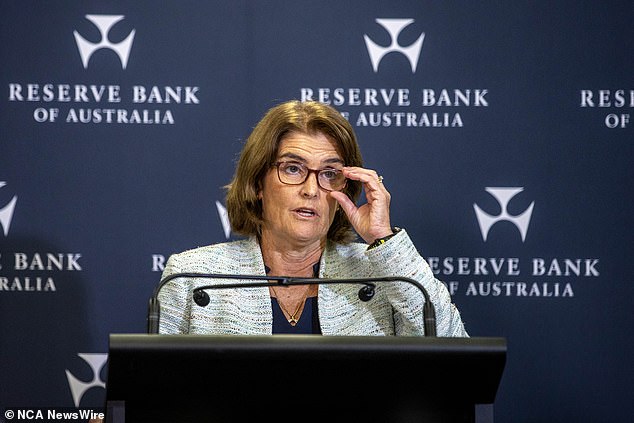RBA holds interest rates: What it means for mortgage holders
The Reserve Bank has issued a chilling warning to every Australian home borrower.
The cash rate was left unchanged at a 12-year high of 4.35 percent on Tuesday afternoon, but Governor Michele Bullock warned that more rate hikes were possible. This was a blow to those who hoped for an early interest rate cut.
“The path of interest rates that will best ensure inflation returns to target within a reasonable time frame remains uncertain and the administration is not making any pronouncements on anything in or out,” she said.
“Returning inflation to target within a reasonable time frame remains the administration’s top priority.”
The Reserve Bank has issued a chilling warning to every Australian home borrower (pictured from an auction in Sydney)
Major banks and economists had expected interest rate cuts in 2024 as inflation eases.
But Ms Bullock said inflation was still too high, even as interest rates were left unchanged for the third RBA meeting in a row.
“While recent data suggest inflation is slowing, it remains high,” she said.
‘The board expects that it will take some time before inflation is sustainably within the target range.’
Monthly inflation data showed the consumer price index was 3.4 per cent in January, only marginally above the RBA’s target of 2 to 3 per cent.
But according to the more comprehensive quarterly CPI data, headline inflation was 4.1 percent in December.
The Reserve Bank does not expect inflation to fall within its target range of 2 to 3 percent before December 2025, it announced in February.
Ms Bullock warned that inflation could remain high unless productivity improves to justify faster wage growth.
Hourly productivity levels in Australia contracted by 0.4 percent last year – a far cry from the long-term average of above 2 percent.
“Nevertheless, this level of wage growth will only remain consistent with the inflation target if productivity growth increases to around the long-term average,” she said.
The RBA’s thirteen rate hikes in eighteen months, between May 2022 and November 2023, marked the most aggressive pace of monetary policy tightening since 1989.
They have slowed the economy, with gross domestic product growing just 0.2 percent in the December quarter.
Australia’s annual growth rate of 1.5 percent in 2023 was almost half of the 2022 level of 2.7 percent.
“While there are encouraging signs that inflation is moderating, the economic outlook remains uncertain,” Bullock said.

The cash rate was left unchanged at a 12-year high of 4.35 percent on Tuesday, but Governor Michele Bullock warned that more rate hikes were possible. This was a blow to those who hoped for an early interest rate cut.
“December national accounts data confirmed that growth has slowed.”
Australia has not been in a recession since the 2020 Covid lockdowns, but has been in a per capita recession since the March quarter last year, where output per worker has shrunk.
The RBA now meets eight times a year instead of on the first Tuesday of every month except January.
Ms Bullock will hold a media conference at 3.30pm Sydney time, following a two-day board meeting on monetary policy.
The Reserve Bank’s next board meeting is on May 6 and 7.
